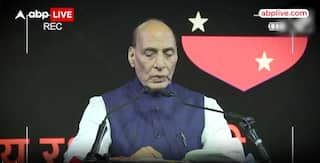Model Tenancy Act: From Security Deposit To Rent Hike, Know How The Act Addresses Various Issues
The Act is likely to boost private participation in rental housing as a business model for addressing the huge housing shortage.

New Delhi: The Centre has cleared the Model Tenancy Act (MTA) with an aim to open up the vacant housing stock for rental housing purposes and also bridge the trust deficit that exists between tenants and landlords by defining their obligations.
While saying the act will promote rental housing, Hardeep Singh Puri, the Minister of Housing and Urban Affairs said, “1.1 crore vacant houses available on rent will complement PM’s vision of ‘Housing for All’ by 2022.”
READ: From Kids Education To Salary Up To 5 Yrs, Reliance Extends Helps To Family Of Deceased Employees
What’s the Model Tenancy Act?
The draft related to the MTA was first released in 2019 in order to bridge the trust deficit between tenants and landlords by clearly delineating their obligations.
Besides, the Act is likely to boost private participation in rental housing as a business model for addressing the huge housing shortage, the Ministry of Housing said. It will encourage the growth of rental housing as it is a preferred option for different segments including migrant workers, professionals, and students.
The MTA act will balance the interest and rights of both the owner and tenant in an accountable and transparent manner. It will be applicable prospectively and will not affect existing tenancies & will cover both urban and rural areas.
What are the key features of the Model Tenancy Act?
A digital platform will be set up in the local vernacular language or the language of the State/UT for submitting the tenancy agreement and other documents. Time-bound and robust grievance redressal mechanism comprising of Rent Authority, Rent Court, and Rent Tribunal to provide fast-track resolution of disputes.
Disposal of complaint/appeal by Rent Court and Rent Tribunal within 60 days.
After enforcement of this Act, no person shall let or take on rent any premises except by an agreement in writing. Apart from this, the act will offer a model for urban and rural properties, as well as a template for residential and commercial properties.
The MTA act would take people from informal to specific contract arrangements between landlord and tenant. A tenant will have to submit a security deposit of two months for residential premises. For commercial property, a tenant will have to pay six-month rent.
Most importantly, the tenant cannot sublet a part of or the whole property to someone else. As per the act, if a landlord has fulfilled all the conditions stated in the rent agreement – such as notice period, etc, and the tenant fails to vacate the premises on the expiration of the period of tenancy or termination of tenancy, the landlord is entitled to double the monthly rent for two months and four times after that.
As per the act, the landowner would give notice in writing three months before revising rent. The landlord cannot hike the rent in the middle of the tenure.
Also, note that a landowner cannot just disconnect power and water supply in case of a dispute with the tenant. The Act states that a landowner cannot enter the rented premises without 24-hour prior notice to carry out repairs or replacements.
The landlord will be responsible to repair structural damages and undertake measures like whitewashing walls and painting doors and windows.
Top Headlines





































